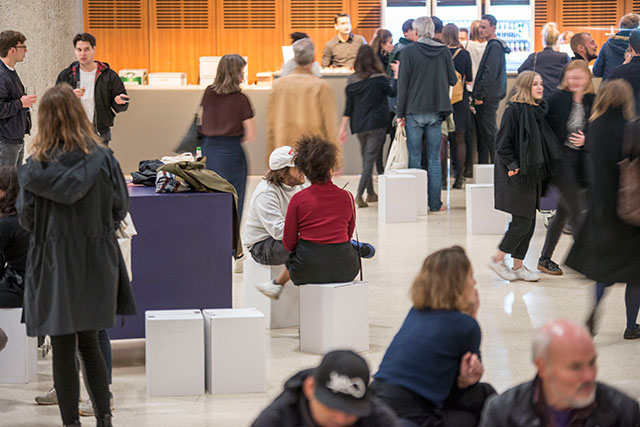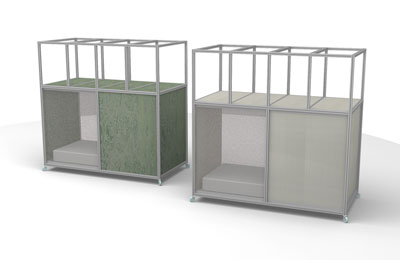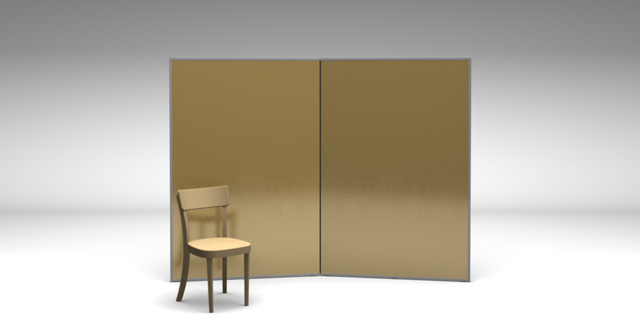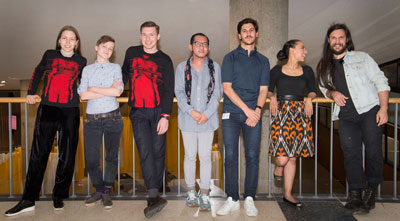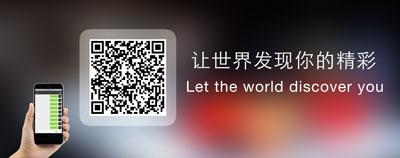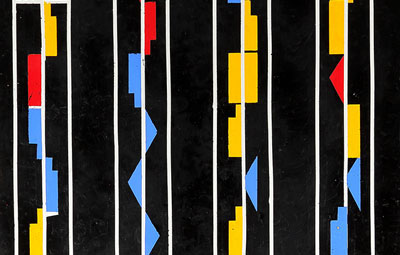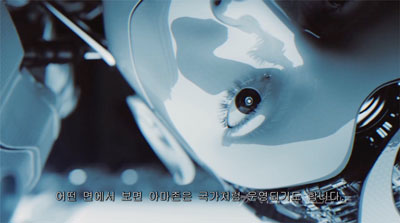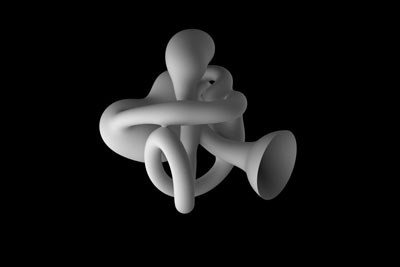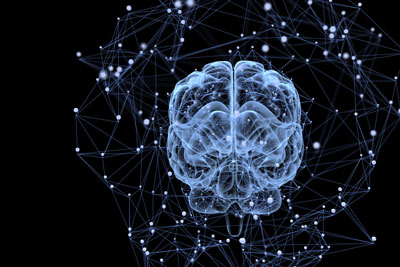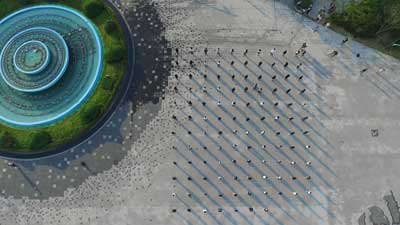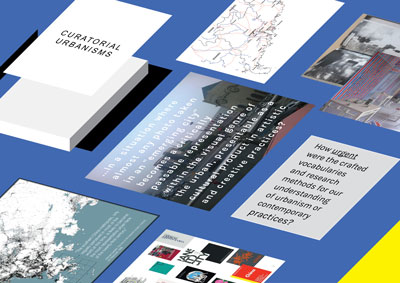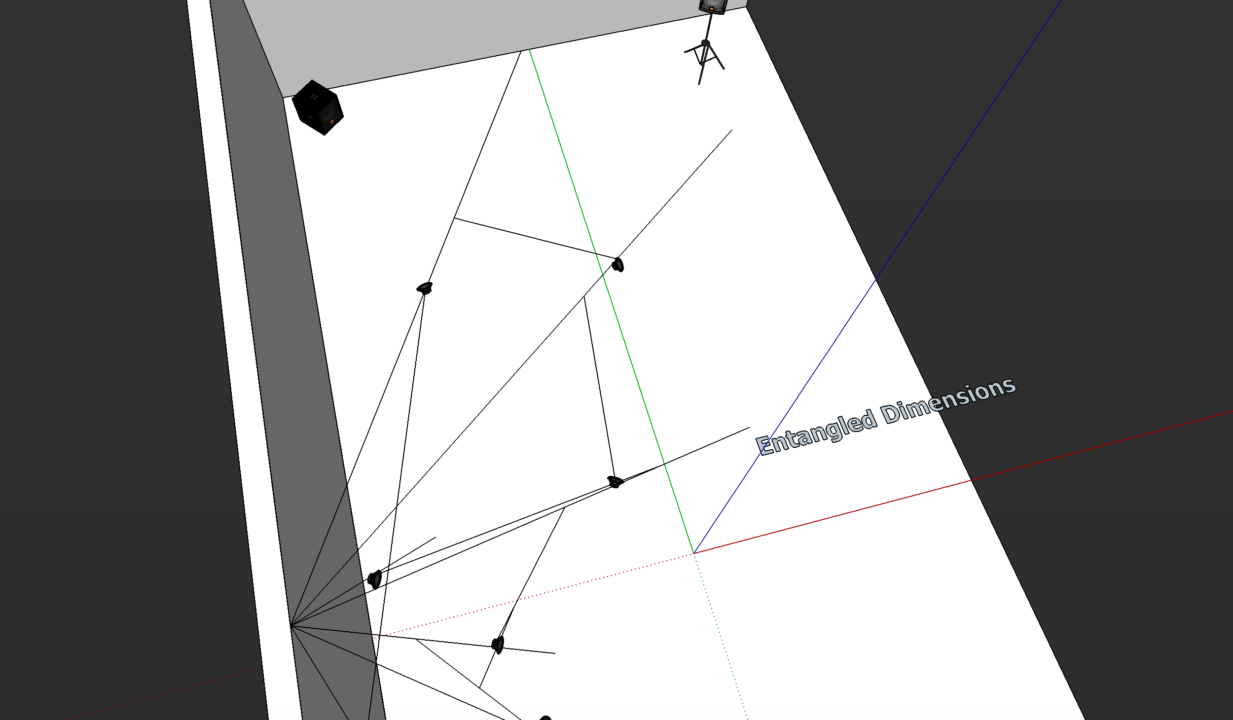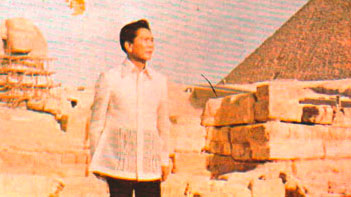Forecast 2017, summary
The Cycle Starts All Over Again
A brief moment to breathe: In late October 2017, our second edition of Forecast closed with an enormously energetic Forecast Festival. “It was a huge success, and I’m a bit overwhelmed,” joked Forecast founder and artistic director Freo Majer, commenting on the project’s past year and especially the Festival itself. At the event, each of →
Flora Miranda
Knitting Identities
In just a few days, designer Flora Miranda’s live performance—a fascinating collaboration between the digital realm and the worlds of design and music—will be shared at the Forecast Festival. Visitors may experience the entire process, and gain valuable insights into Miranda’s wholly innovative way of working, which will shape future concepts of creativity. Miranda decided →
Tara Catherine Pandeya
Dance without Borders
Tara Catherine Pandeya is in the midst of final rehearsals for her one-woman show at the Forecast Festival, which draws upon traditional dances to address topical questions of alterity and exclusion. In Raqsistan, The Land of Dance: A Cartography of the Body, she aims to stage physically innovative responses to conflicts heightened in our contemporary →
Liliana Piskorska
Individual Bodies, Public Protest
It’s just a few days until the debut of Liliana Piskorska’s video art piece Public Displays of Affection at the Forecast Festival, which vividly illustrates the physical clash between protestors and police. Examining this contact through the medium of film will allow Festival visitors to engage with a topical issue in an innovative way. Piskorska’s →
Renan Laru-an
Exhibition as Speech, Speech as Exhibition
In the final days before the Forecast Festival, curator Renan Laru-an is working closely with his mentor and his team to solidify his study of dictators’ image production and world-making, captured in his project The Artist and the Social Dreamer. The Haus der Kulturen der Welt auditorium is the heart of his work. Here, visitors →
Mathieu Bujnowskyj
Objects as Triggers
Reflecting on six months of intense collaboration with mentor Philippe Rahm, Mathieu Bujnowskyj shares three key insights. The Forecast Festival is days away, and architect Mathieu Bujnowskyj is putting the finishing touches on his prototypes before their debut at the Haus der Kulturen der Welt. His designs reinterpret three antique furniture typologies. The prototypes →
Flora Miranda
“I See Myself in the Screen”
Flora Miranda has always immersed herself in environments where creativity is paramount, but one element—digital technology—remained inaccessible. Until she began her research for Forecast, that is. “My work so far has always dealt with topics relating to the digital world,” Miranda recounts. “But it was always a fictional, speculative approach, due to a lack of →
Renan Laru-an
A Congress of Dictators
The curator Renan Laru-an started with a fascination for the volatile subject of dictators’ speeches. At the Forecast Forum, his focus was on printed works, reflecting on the question of how to present these speeches in an exhibition. But his close mentoring relationship with Hou Hanru has inspired him to pivot into an intriguing new →
Liliana Piskorska
Transposing the Violence
Liliana Piskorska’s video art project “Public Displays of Affection” originally focused on the tremendous changes Poland has undergone in recent years. In a series of intense discussions with her mentor, video artist Bjørn Melhus, she has begun to look away from the specifics of one nation’s politics to the sheer physicality of “the moment of →
Stefan Maier
Feeling Sounds
Stefan Maier’s Forecast project explores the impact of sound on our physicality—how it transforms our nervous systems and gets to our corporeality’s beating heart. His performative installation questions habitual modes of thinking and interacting with music. The discovery of a unique way to physically engage the audience in his music has transformed his plans for →
Mathieu Bujnowskyj
Architecture in the Post-Digital Age
By exploring ways of using architecture to address the needs of a society tethered to digital technologies, Mathieu Bujnowskyj’s partnership with mentor Phillippe Rahm is inciting questions on the discourse of the discipline itself. From WiFi to 3G, from the cloud to our constant attachment to smartphones, everything and everyone is perpetually connected. As part →
The Selected Mentees 2017
The Projects Have Been Selected!
Now that the Forecast Forum at Haus der Kulturen der Welt (HKW) has concluded, we are delighted to announce the concepts our mentees will realize with their mentors: The Artist and the Social Dreamer Mentee: Renan Laru-an / Mentor: Hou Hanru Public Displays of Affection Mentee: Liliana Piskorska / Mentor: Bjørn Melhus Fullspectrum Furniture Mentee: →
A project by Hui Ye
Quick Code Service
Hui Ye’s Forecast project explores the intersection of technology and identity in evoking a sense of intimacy. Returning to China after a twelve-year absence, she realized that life in China today consists of permanently switching between the digital and physical worlds. The two have become a single reality in everyday life in China. “The WeChat →
A project by Joshua Kagimu
Mysteries of Selfies
Joshua Kagimu’s project explores the ways in which a selfie can be used to create an alter ego and positions the selfie as a form of performance art. “Unlike studio photography, selfies allow us to edit our location and our poses; they allow us to reform our identities in a snapshot moment. I’m intrigued →
A project by Jaime Patarroyo
A Momentary Trembling
Jaime Patarroyo’s Forecast proposal explores the idea of empathetic space: a living environment capable of exhibiting human reactions to the people occupy-ing it. Using advanced materials, the designer will develop a reactive fabric based on materials that respond to human touch—questioning the relationship between human behavior and digital technologies. “I would like to explore →
A project by Raphaëlle Oskar and Mayasari Feradina Zoesmar
Mute On
Mute On reveals what happens in the space between question and answer. Raphaëlle Oskar and Mayasari Feradina Zoesmar’s proposal combines choreo-graphy, verbal expression, and a theoretical exploration of communication processes. Just as each question looks for an answer, the duo’s performance unveils what shapes the space between person A and person B. “We define →
A project by Ricardo O’Nascimento
ProtoSenses
Ricardo O’Nascimento’s proposal uses wearable technology to explore the relation-ship between humans and machines. The designer is particularly interested in creating devices and situations that allow people to experience the world in unconventional ways, and views wearable artifacts as a means of transcending the traditional boundaries of sensory experience. “Why not hear with our →
A project by Scott Mc Laughlin
Resonant Paths
Scott Mc Laughlin’s project Resonant Paths utilizes the extensive public spaces available at Haus der Kulturen der Welt for an interactive installation of suspended everyday objects that viewers can play as instruments. “The objects are organized in such a way that paths are offered through the garden, paths of pitch. The participants thread their →
A project by Michel Erler
Gaming Is the New Voting
Michel Erler’s proposal uses an interactive gaming platform to encourage citizens to engage with their communities. In an age characterized by widespread political and social dislocation, Gaming Is the New Voting aims to facilitate direct democra-tic participation, capitalizing on cutting-edge technology to explore new forms of policymaking and citizenship. “The political year 2016 was →
A project by Ania Soliman
Explaining Dance to a Machine
Ania Soliman’s proposal begins with Laban’s movement notation system, which she imagines as a script that will teach a robot how to dance. “This work is about score, performance, and artificial intelligence. I am interes-ted in developing ideas of the body as machine, the mind as running on scripts, and using the medium of →
A project by Sebastian Haug
Sen[city]sation
Sebastian Haug’s proposal examines meteorological effects on urban spaces to explore the intersection of nature and architecture. His deep personal interest in the impact of atmospheric changes has driven him to recognize the need for sophisticated methods capable of measuring and adapting to the weather. “There are currently not enough practical options to measure →
A project by Annika Kuhlmann
After Work
Annika Kuhlmann’s proposal After Work examines the role of the contemporary artist in a society increasingly dominated by machines. As more jobs become automated, Kuhlmann imagines a post-work economy where immaterial labor resembles the work of artists. After Work will look at the possible institution-alization of art in a society where everyone can—and needs—to be →
A project by Stefan Maier
Incompossibles: Speculative Thought and Algorithmic Architecture
Stefan Maier’s proposal questions the notion of freedom in the age of determinis-tic algorithms. Proposing a completely new direction for his work, Maier looks to explore and conceptualize human agency in a society dominated by feeds that socially condition our preferences and reinforce habitual modes of thinking. “I am interested in the speculative potential →
A project by Anna Sobczak
Nostalgia
Anna Sobczak’s proposal explores the concept of nostalgia and passing down memories in several small villages deep in the mountains of southern Italy. “In extensive interviews, these villagers will be asked to define the memories and knowledge about humans they would like to pass on to an artificial intelligence. During these interviews I will →
A project by Jesi Khadivi
Bād’e Sabe
Jesi Khadivi’s proposal explores the way environmental elements can function as carriers for political narratives in the Middle East. Building upon an image of a violent dust storm in her father’s home city of Ahvaz in Iran, Khadivi’s presen-tation will depict a series of dust storms—both real and imagined. “While the dust storms in →
A project by Nichola Czyz
The Foundation for Non- Anthropocentric Nature
Nichola Czyz’s proposal queries the meaning of nature in an anthropocentric world. Czyz intends to use her background in architecture to answer these questions by artificially simulating the environment of Mount Kinabalu in Borneo. The Foundation for Non-Anthropocentric Nature will explore the inter-action of the manmade and the natural, hypothesizing a manmade habitat for an →
A project by Julia Sokolnicka
Playing the Self
What are the limits of individual responsibility? How can we respond to the problem of elitism? Julia Sokolnicka draws on her recent experiences to create a manual for approaching the Other, focusing on the emotional states that unite us when we are forced to leave our comfort zones. “I would like to use the →
A project by Lisa Tuyala
The Poetry of Getting Lost
Lisa Tuyala’s Forecast project blends electronic music, extended vocal technique, and deconstructed language to tell a story close to her heart. The German-Congolese artist will piece together her family narrative using the letters that her German mother wrote home to Duisburg in the 1970s while living in the Democratic Republic of the Congo (formerly Zaire) →
A project by Tara Catherine Pandeya
Raqsistan: A Cartography of the Body
Tara Catherine Pandeya’s project is a one-woman multimedia show inspired by human emotions. The work is a fictional dance world of Pandeya’s own invention, choreographed using the traditions of ethno-contemporary Central Asian dance. “What are effective ways to express traditional and ethno-contemporary movement in a postmodern framework? How can one execute a harmonious synthesis →
A project by Mathieu Bujnowskyj
Fullspectrum Furniture
Mathieu Bujnowskyj’s proposal responds to the way digital technologies are profoundly shaping modern society and the relationship we have to architecture. “Our society is now facing the emergence of a certain post-digital condition, where our economy, culture, social conventions, and inevitably architecture, too, are deeply influenced by the diffuse, long-term consequences of digital technol-ogies →
A project by Tsao Yidi
Gray Matters
Tsao Yidi’s proposal is an interdisciplinary and international examination of representations and perceptions of the human brain. Tsao will utilize cultural history, art, literature, science, and technology to create a multifaceted exploration of the brain. “With the advancement of neuroscience and biochemistry in modern science, we have witnessed a paradigm shift in our understanding →
A project by Isaac Chong Wai
The Collective Individual Exercises
In his proposal for Forecast, Isaac Chong Wai will develop a series of performances dealing with the concepts of individualism versus collectivism, and the personal versus the public. “When it comes to the idea of the future, how can we prepare and practice the search for an idealistic space or a utopia in which everyone means everyone →
A project by Stephen Kwok
6pm
Stephen Kwok’s project dismantles the internal logic of wildly disparate events and reassembles them into a single cohesive experience. He investigates how sound can be manipulated to subtly shape mundane events. Is it possible to redirect the type of attention normally reserved for the sacred space of the theater? To what extent can the idea →
A project by Mika Savela
Curatorial Urbanism(s)
In his dissertation project, Mika Savela studied the curatorial strategies used to put rapidly growing cities in South China on display as novelties or even as paradigms for urbanization from the mid-1990s to 2000s. “Curating as a newly emerged discipline became (if only for a while) the main discursive space for projects on urbanism →
A project by Liliana Piskorska
Public Displays of Affection
Liliana Piskorska’s video art proposal Public Displays of Affection tackles the tremendous changes Poland has undergone in recent years. “The deeply conservative new government has altered laws with shocking speed, bending democratic procedures in the process. In response, a wave of demonstra-tions has swept through Poland. Hundreds of thousands have taken to the streets →
A project by Carlos Ramírez-Pantanella
Geolfaltoscope
The geolfaltoscope is a tool of Carlos Ramírez-Pantanella’s invention. It is a device emitting scented currents into city air to evoke olfactory landscapes in environments that are often far away. “Human beings inhale and exhale an average of 23,000 times a day, and every single flow of air is loaded with information. Scents act →
A project by Flora Miranda
Knitting Virtual Luxuries
Flora Miranda’s proposal presents an application that collects data about a user’s online behavior to design a unique item of clothing specifically for him or her. “The vision is to create a data visualization app that takes full advantage of the virtual world and materializes user data in the form of luxurious garments. The →
A project by Joël Detiège
Flambeaux
Choreographer Joël Detiège’s project proposal Flambeaux examines the fictions of history and the facts of myth. He uses music and dance to tell the African diaspora’s story of struggle, perseverance, and triumph in New Orleans. Its members’ achievement is conveyed through the astounding array and quality of the music its history fostered, and the cathartic, →
A project by Maya Shenfeld
Entangled Dimensions
Composer Maya Shenfeld’s proposal uses the structure and experience of a sound installation to explore the effect social media has on our everyday lives. “Recent political events such as the United States elections and Brexit have again highlighted the extent to which new media has come to play a defining role in the →
A project by Beny Wagner
Obscene Rain
Video artist Beny Wagner’s proposal emerges from his extensive research into both the notion of the obscene as derived from ancient Greek theater, and how the meaning of this term has evolved over time. “The English word ‘obscene’ comes from the ancient Greek ‘ob skene,’ translating literally as ‘off-scene’ or ‘off-stage.’ The word embodies →
A project by Renan Laru-an
The Artist and the Social Dreamer
Renan Laru-an’s project proposal The Artist and the Social Dreamer is a curatorial plan that puts the medium of formal orations at the heart of an exhibition, focusing on forms of globalization created by the internationalisms of authoritarian leaders. Libyan Prime Minister Muammar Gaddafi, Imelda and Ferdinand Marcos, Nur Misuari, and other dictators have used →
A project by Marina Andronescu
Threshold Politics
Marina Andronescu’s project proposal focuses on a community of young people who have colonized the web of underground pipes and tunnels that provide Bucharest, Romania, with central heating. Her project develops architectural mechanisms intended to change these individuals’ immediate environment and the larger political situation, and to help them gradually transition to an above-ground existence. →
Forecast Forum 2017
The 30 Concepts Have Been Chosen! →
Future Architecture Platform
Designing the Future of Architecture
The Future Architecture Platform brings together architecture museums, festivals, and organizers from across Europe to communicate topics and questions concerning the future of architecture and cities to a wider audience. For the past year, Forecast has been an associate member of this unique network, which was initiated in 2015 by the Museum of Architecture and →




